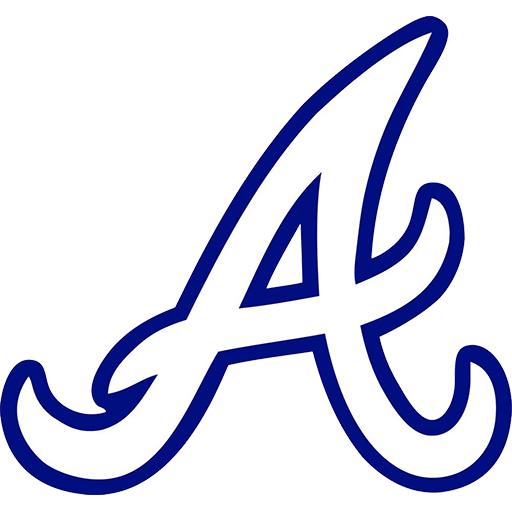After a puzzling start that saw the Tampa Bay Rays go on significant winning and losing streaks, the franchise was unsure of their ability or potential to compete during the first month of the season. However, a series of bold decisions were looming that would dramatically alter the team’s fate in 2018.
Welcome back to Rays in Review, where I go piece-by-piece through the 2018 season for Tampa and see what went right, what went wrong, why it went that way, and what we can learn going forward.
In the first part, we covered the curious start that the Rays got off to in April. Denard Span and C.J. Cron lead the team’s bats through their mighty pitching struggles to miraculously come out with a 13-14 record at the end of their first month. So, what was with this Rays team? Were they as bad as advertised pre-season? We were all still unsure. They did get off to that horrific 3-12 start, but also finished 9-1 to close the month.
May looked like it was going to help clear the smoke on where this young and rebuilding team stood in the power rankings, but it actually muddied the waters further. Fresh from their aforementioned 9-1 stretch, Tampa started their second month by undoing all that work, going 3-8 in their first 11 games, including dropping three of four to the cellar-dwelling Baltimore Orioles. How did that happen?
Well, it’s a tough one to explain. Cron, Robertson and Ramos were still mashing at the plate, and Chris Archer and Blake Snell were recovering from their early-season struggles. The best way I can describe the cause of this rough stretch was inconsistency.
Offensively, the team had never been worse, despite the successes of the above players, the team only managed to score an average of 3.2 runs a game during this span. Meanwhile the pitching had some great performances, particularly against the Tigers and Braves, but were often not quite good enough to carry their lackluster lineup. In the four games played against the Tigers and Braves in May, the scores were as follows:
 Detroit Tigers
Detroit Tigers Tampa Bay Rays
Tampa Bay Rays Detroit Tigers
Detroit Tigers Tampa Bay Rays
Tampa Bay Rays Tampa Bay Rays
Tampa Bay Rays Atlanta Braves
Atlanta Braves Tampa Bay Rays
Tampa Bay Rays Atlanta Braves
Atlanta BravesAll those games with the exception of the last one featured great outings from the pitching staff, but the bats didn’t turn up. However, in the Orioles series, the pitching imploded. In the three games Tampa dropped to the O’s, they conceded 9, 6 and 17 runs, which are scary totals to say the least.
The Rays were seeming to only bring one half of a competent team at a time, and were frustratingly inconsistent in both halves of their game. Inconsistency is a clear tell sign of a young team still trying to find their way in the major-leagues, and the Rays were just that. Through the first six weeks, it was one step forward, two steps back.
It seemed as if the team’s shaky morale was on the verge of reaching a tipping point, following their 17-1 loss to Baltimore on May 13th, but then the team demonstrated, for the first time, that it had some real fire, grit and determination. Instead of letting the loss and inconsistent play get to them, they travelled to KC and took care of business in a big way. Scoring a huge sweep of the Royals in three closely contested games.
This sweep was just what the doctor ordered, as it started a 6 game winning streak and boosted Tampa back to .500 baseball again.
But then, on May 20th, Kevin Cash made an announcement that would shake the baseball world to its core…
Cash announced that career-long reliever Sergio Romo would get the start against the Los Angeles Angels, but not as a traditional start, as an ‘opener’. The Rays’ skipper would elaborate on this peculiar plan by saying that he is starting Romo because the Angels have three very tough right-handed hitters at the top of their lineup, and would prefer having the righty reliever face them before bringing in the expected starter, left-hander Ryan Yarbrough.
This sent the baseball world into a frenzy, almost everyone had their take on whether this plan was viable and what it would mean for the sport going forward, even though it wasn’t doing anything too radical, just changing the order of when pitchers would enter the game.
With the world watching, Romo would make Cash look like a genius, striking out all three batters he faced in the first before giving way to Yarbrough for the second inning onward. With the first three Angels already retired, Yarby would then go on to provide a quality start in relief – pitching 6.1 innings and giving up just one run en route to a 5-3 victory for the Rays.
Cash would stick to the same plan the next day, allowing Sergio to pitch 1.1 innings this time, where he would strike out three and walk two. The opener strategy would quickly develop into a regular occurrence for the Rays, as Romo would continue to pick up starts here and there but also allow struggling reliever Ryne Stanek to find his groove, as he performed significantly better as an opener than as a bullpen arm.
At the time, those that opposed the opener would argue that it would rob ordinary starters of their deserved pay as they won’t pick up the same kind of stats as those they would when starting traditionally. This has proven to be a false argument, however, as Yarbrough, who made the vast majority of his outings as a ‘bulk reliever’ following an opener, would finish the season with a 16-6 record, 147.1 innings and 128 strikeouts with only six starts on the season.
These numbers would look right at home against most starters in the major leagues regardless of their implementation of the opener. Analysts realized this too, as Ryan tied for fifth in AL Rookie of the Year voting in 2018.
While it would be wrong to call the opener full-proof, it did help the Rays a lot going forward. Since they implemented the strategy on May 20th, their first inning ERA was 3.75 – the lowest in the American League, and their team ERA since that date was 3.50, which was third in the majors, behind only the Astros and Dodgers.
The next key point of May for the Rays was the call-up of one their most exciting prospects – Willy Adames. Adames was an exciting, young shortstop that had a good bat and played decent, if inconsistent defense, and was MLB.com’s #2 prospect in the Rays’ system. Willy came to the organization in 2014 when the Rays traded David Price to the Tigers.
He received the call prior to the May 22nd game against the Boston Red Sox, and he would make his debut against Chris Sale, so the young shortstop was very much subject to baptism by fire. But, Adames made a big impression in his first game, hitting a home run off Sale in the fourth inning in what would end up being a 4-2 loss for Tampa.
Adames would go back to Durham not too long after this but was called up again and this time for good. Looking back on the season, Adames proved to be a key presence in the lineup down the stretch, particularly following the trade deadline when the former starting shortstop Adeiny Hechavarria was traded, allowing Willy to have the starting job to himself.
He performed so well down the stretch he was named the shortstop for MLB’s team of the month in August, but more on that later in the series.
Similarly to April, the Rays were lining up to finish May with reason for optimism, but still a lot of uncertainty as to how good they actually were. Was their .500-ish record an over or under-performance? It was hard to say, but it seemed the front office was ready to start shedding parts and save payroll for later down the line.
On May 25th, Tampa shocked their fans by making a trade with the Seattle Mariners sending fan favorite Denard Span and closer Alex Colome away for a pair of prospect.
 Seattle Mariners
Seattle Mariners Tampa Bay Rays
Tampa Bay RaysSpan had driven in a lot of key runs in his brief time in Tampa, and was a beloved figure amongst Rays fans, and Colome was the team’s closer, and while he had struggled to begin the year, he had a lot of upside and was expected to draw a bigger return from a trade than two uninspiring prospects.
The motive for the deal was clear, shed more payroll, and to be fair, they did. The Rays saved around $9M in the deal, moving them even further down the payroll rankings. The team was looking to get young and cheap, but the long-term plan remained unclear to everyone outside the front office, and fans perceived the move as the FO giving up on the team already.
In hindsight, what the move did was free up salary space that the Rays are primed to use this offseason, and potentially allowed them to go after Tommy Pham at the trade deadline. It also gave a chance to the likes of Jose Alvarado to have some chances in later innings, giving the lefty a better chance to develop. While both former Rays had a good year in Seattle, it seemed as if the deal was the right move.
(On the same day, Tampa made an under-the-radar move to acquire Wilmer Font from the Oakland A’s. Expect to hear more about him in the next article.)
At the end of May, the Rays were 28-27. At the very least, the were outperforming their expectations to tank, but they were still nowhere near a contending team, and after the Mariners trade, their record was expected to turn sour quickly.
In the next addition of Rays in Review, I will look at the call-up of Jake Bauers, the short but miraculous run of Wilmer Font and ‘Nasty’ Nathan Eovaldi, so stay tuned to Rays Colored Glasses!
